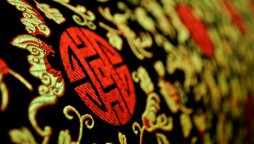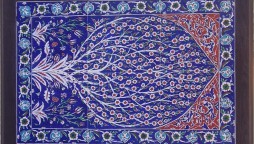The History of the Red Carpet

Of all the carpets and rugs known throughout history, few are as recognized and celebrated as the red carpet. In fact, the red carpet has become an almost indispensable symbol in American culture and the rest of the world, marking both the magnitude of certain special occasions as well as the renown of movie stars, political leaders and other elite figures whose careers have thrust them into the public eye. Yet, while the red carpet has largely become an icon of notoriety, few know of its true origins or significance. Today, we explore the history of the red carpet, and its millennia-long influence on the culture of mankind.
The Red Carpet’s Early History
The first historical reference to the red carpet comes from a story written by Aeschylus, who penned the literary work known as Agamemnon in 458 B.C. In the story, when the narrative’s main character returns home from the city of Troy, he is greeted by none other than his wife Clytemnestra, who tells this King of Argos:
Now my beloved, step down from your chariot, and let not your foot, my lord, touch the Earth. Servants, let there be spread before the house he never expected to see, where Justice leads him in, a crimson path.
From there, the carpet was likely used over the subsequent centuries as a way of denoting royalty, though it doesn’t show up again in any great concentration until the European Renaissance period. It’s during this time that the red carpet undergoes a change of sorts, being identified in paintings and murals as a chief background color in rugs and carpets laying before the thrones of emperors, kings, sacred figures and significant holy dignitaries of the time.
Later, according to historical documents, the red carpet makes its first appearance in the United States as it is rolled out to receive President James Monroe upon his arrival to Georgetown, South Carolina, and could very well be where “rolling out the red carpet” was coined. On the other hand, the term “red-carpet treatment” likely inserted itself into modern culture through the New York Central Railroad, who used “plush crimson carpets” to direct passengers aboard their 20th Century Limited train at the turn of the last century.
The Red Carpet’s Modern History
Probably the most common and most recognizable use of the red carpet has been almost solely for film premieres and film-related events, which includes the Academy Awards. Anyone who has watched these events will immediately identify the awards show with the pre-event photography and celebrity/paparazzi socializing that takes place on the red carpet. It has even led to another term used by journalists and TV personalities to describe the apparel and accessories being worn by those attending, which are often referred to as “red carpet fashions.”
Outside the film industry and celebrity events, the red carpet is still being used in the modern political sphere, whether as a cover for the steps of the U.S. President’s Air Force One, or at special events where many of the world’s leaders are in attendance. The reason for this? While red does signify power and respect, and has throughout history, it has also become recognized as a mark of hospitality among heads of state and religious organizations. And we expect its presence to be seen among society for many centuries to come.






